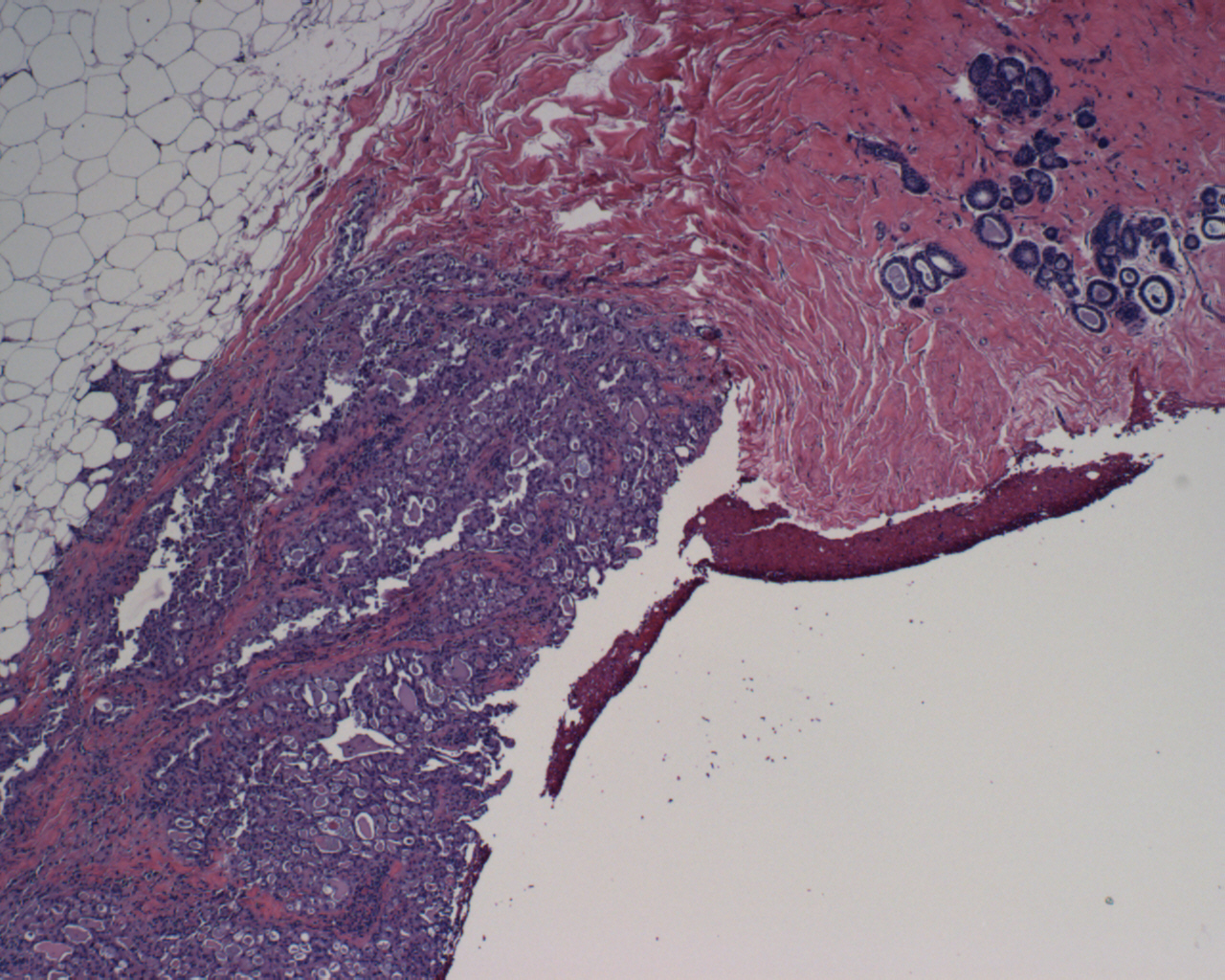System: Breast: Invasive Carcinoma - Special Types: Neoplastic: Secretory Carcinoma

System: Breast: Invasive Carcinoma - Special Types: Neoplastic: Secretory Carcinoma



Low power of this breast needle core biopsy demonstrates normal fibroglandular parenchyma (top) and a infiltrative of tubular or acinar structures (bottom).
Another view of an almost solid growth of cystic structures.
One of the key characteristics of secretory carcinomas is the present of extracellular or intracellular eosinophilic secretions.
At higher power, the nuclear features a fairly bland. Note the almost ubiquitous luminal secretions.
Secretory breast carcinomas are uncommon and account for less than 1% of breast tumors. However, this tumor is the only breast epithelial neoplasms that exhibits a balanced translocation. The t(12;15) translocation creates an ETV6-NTRK3 fusion gene that encodes a chimeric tyrosine kinase. Interestingly, this exact translocation is seen in two other neoplasms, cellular mesoblastic nephroma and infantile fibrosarcoma (Lae).
Secretory breast carcinomas are also ER, PR and HER2 negative and thus, fall into the group of "triple negative breast cancers with a basal-like features (i.e. basal cytokeratins)(Lae).
Histologically, the tumor cells may form cystic, tubular, papillary or solid structures. The nuclear features are relatively uniform with minimal atypia, and the cytoplasm may be clear, vacuolated or granular. Prominent intracellular or extracellular eosinophilic secretions are a helpful diagnostic feature.
This tumor was initially described in children, hence the outdated term "juvenile breast carcinoma", but now, the reported age range is quite wide (5-87) and many of these tumors arise in adult women (O'Malley).
Prognosis of this tumor is actually quite good and death from metastatic disease is rare.
Laé M et al. Secretory breast carcinomas with ETV6-NTRK3 fusion gene belong to the basal-like carcinoma spectrum. Mod Pathol. 2009 Feb;22(2):291-8. Epub 2008 Nov 14.
O'Malley FP, Pinder SE. Breast Pathology: Foundations in Diagnostic Pathology. Philadelphia, PA: Elvesier; 2006: 219.